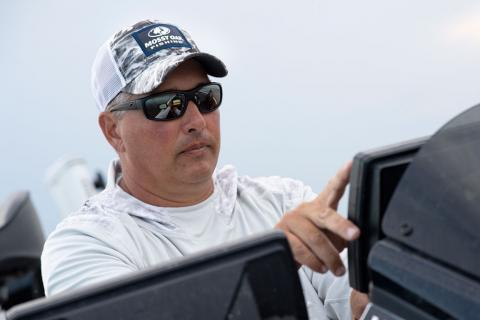Todd Amenrud | Originally published in GameKeepers: Farming for Wildlife Magazine. To subscribe, click here.
My father first introduced me to the sport of hunting through pursuing small game like squirrels, upland birds and waterfowl hunting. I can remember some of the hunts we used to have back in the 70s! My memory plays back days of thousands of mallards pouring over a tree-line into a small wild rice lake or jumping pot-holes and seeing hundreds of “woodies” lift to the air. Thanks to outstanding efforts by US Fish & Wildlife agencies, Ducks Unlimited, CRP and other NRCS programs, and waterfowl hunters themselves, the “good ol’ days” may be yet to come.
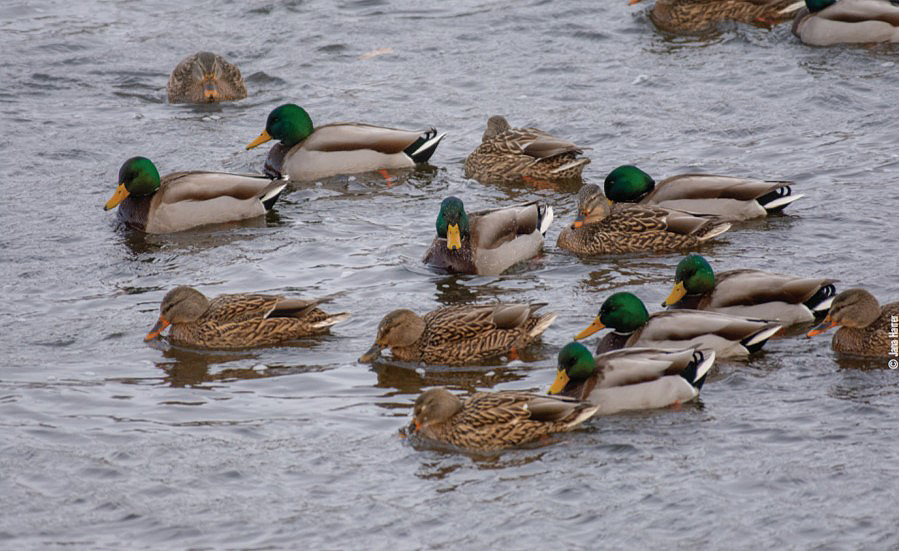
The fly-ways may have shifted a bit, and while the populations can fluctuate a bit year to year, solid numbers seem to be here. Duck populations have rebounded tremendously over the last four decades and goose numbers are close to all time highs.
Over the years I’ve had the opportunity to hunt with some of the Midwest’s waterfowling greats. I’ve learned there are some definite keys to consistency. Scouting, set-up and proper decoy placement are three of the most important, but you could also add calling and appropriate concealment to that list. The first three; however, are a must if you consistently want wings cupped over your decoys.
I recall a hunt a few years ago; the spot reminded me of how Arkansas looks with its flooded timber and sloughs surrounded by thick willow brush, however, it was actually north of Devil’s Lake, North Dakota. After scouting for two days we located a conglomeration of pot-holes that the ducks were just piling into. The ducks just loved this area for roosting cover. Hundreds of mallards, pintail, widgeons, teal and other ducks filled the sky and through my binoculars I could see a spot where they seemed to be “buzzing over” continuously.
The next morning was perfectly still as we set out three dozen floating mallard decoys. When the spread was set, I found a spot amongst the willows and waited for light. Within seconds there were ducks landing in the decoys. With the pink morning sky now evident, I picked out a single drake mallard with his wings cupped, ready to settle in - my 12 gauge barked once and the “greenhead” splashed-down.
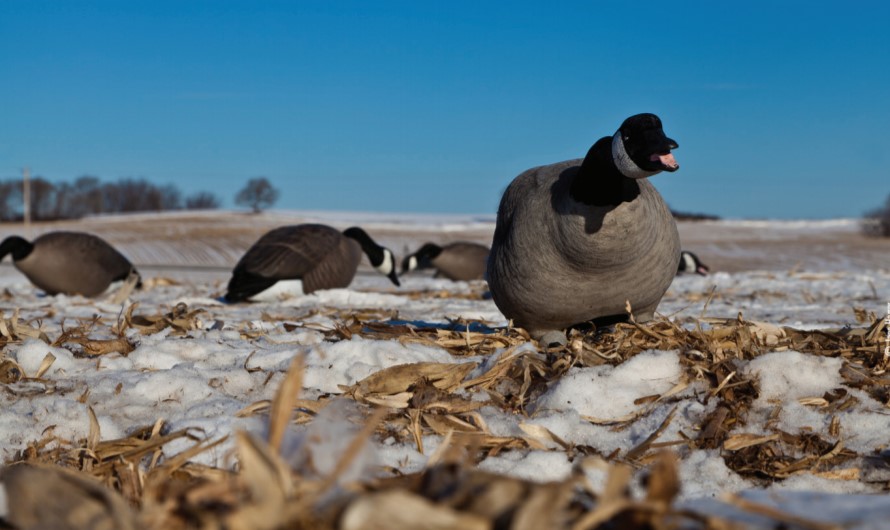
As the day progressed I couldn’t believe how well the decoys worked. Singles, doubles, flocks…as soon as they saw the spread they’d cup their wings and head straight for the landing zone. If I would have just wanted to kill ducks, my hunt would have been over in minutes. I picked and chose and wound up with a limit of mature drake mallards and a bonus of two Canada “honkers.”
Another prime example of these key points was a field hunt for Canada geese last season in the “Interlake Region” of Manitoba (the area between Lake Winnipeg and Lake Manitoba). A few of us had our hunt ruined by two unethical hunters. We had decoys and they didn’t. Rather than ask if they could join us, or wait for us to ask them, they moved-in on us as close as their permission boundary would allow. They shot at geese over our heads that were still out of range for us. They were taking two hundred yard shots and had fired two boxes of shells and hadn’t ruffled a feather. We’ve probably all seen unethical hunters like this at one time. We pulled up stakes during prime time and made the best of the rest of the day by scouting. I didn’t know then, but this was a blessing in disguise.
We moved away from the hunters and into the geese. But rather than Canada geese, we found “snows,” “blues” and mallards. Our dilemma was the fact that we didn’t have any snow or blue goose decoys, only our Canada shells…and in the “boonies” of Manitoba, our options of finding some were limited. We spent the rest of the afternoon cutting dowels and attaching white garbage bags to them. I would have much rather had real decoys, but as the saying goes, “improvise, adapt and overcome!”
By the next morning one of my companions had been able to scrape-up five dozen silhouettes and four dozen wind-socks, combined with our “jerry-rigged” garbage bags, we had a rag-tag spread of snow geese. We also set out some mallard shells and a small group of Canada geese for an extra confidence builder.
After a few minutes of sipping coffee, you could hear wings whistling, the mallards came first. They would lock-up their wings and not give a second thought. Flock after flock would swoop down over our heads. Then…the resonant sound of distant geese. Flocks of five to thirty or so geese would swing once, then cup their wings and commit. I think we could have laid white hankies in the field that day and they would have still decoyed. They kept coming until we had harvested our limit.
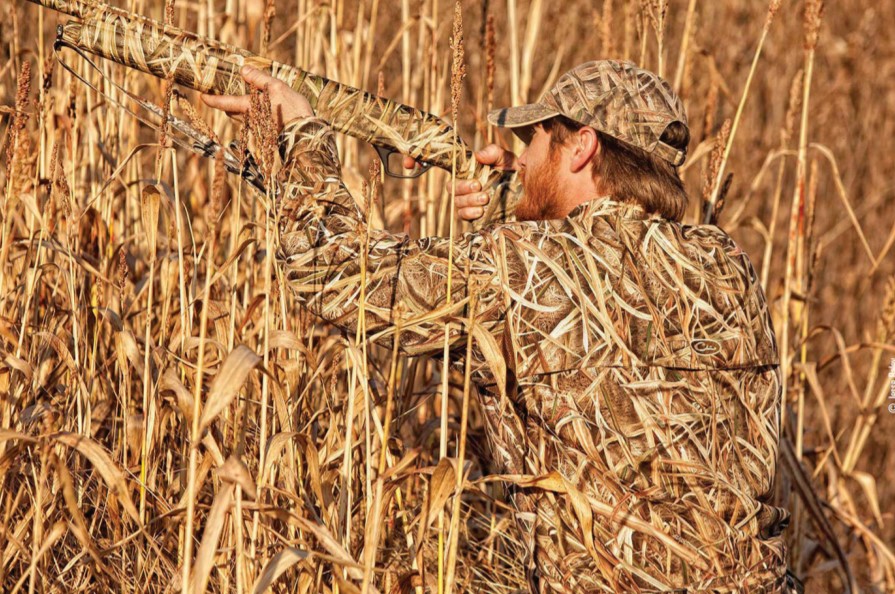
1. Counterfeit Companions
Decoy placement is something I believe most waterfowl hunters don’t fully understand. Many hunters would simply scatter their three dozen mallard decoys (like I had used on the first hunt) over a wide area out in front of their position. These waterfowlers probably haven’t spent much time watching real ducks on the water. It depends on whether they are feeding or roosting, but pay attention and you’ll see they take up less water than you realize. They’re usually in tighter groups.
If you have different species of ducks residing in the same area they may be spread out a bit, mallards over here, teal over there, pintails over there and so on, but look at the area each flock is occupying. They are grouped much tighter than how most people present their decoys. In this situation we placed out two random tear drop shaped groups on either side of our position with a landing spot in between about twenty-five to thirty yards wide. Giving them a “landing zone” is one of the most important aspects if you really want ducks to decoy. If you just want them to “buzz” your spread, placing them out indiscriminately will work, but there’s nothing like shooting at ducks that are truly decoying.

have to be very thorough with your set-up details. You can’t
get sloppy or lazy once they’re “educated.” Put in the work
to try and make your set up where the birds already favor
to be. Be creative. Here’s the author with a limit of giant
Canada geese taken off of his home property.
As far as placement of goose decoys, there are some experts that will tell you that you need to face them all strictly into the wind. I do agree with that somewhat, however, watch a flock of geese feed sometime. They may be facing every which way. I like to place goose decoys in random smaller groups and vary the position. It seems the stronger the wind, the more you want to adhere to facing them into it - and just as with the duck decoys; you must leave a landing zone.
As I mentioned, we had some mallard and “honker” decoys set out on the goose hunt. Again, watch them in a field together. They may be in the same general area, but the different species seem to group to themselves. We set the honker decoys out about 40 yards from the snows, and the mallard shells about 40 yards on the opposite side.
I learned something from Fred Zink, one of our Nation’s top waterfowl hunters. When hunting Canada geese, Fred likes to use silhouette decoys along with several other types of full-body decoys. He says he places the silhouette decoys very close together. Because of the contrast of light and dark colors and the shadows when geese are flying by and one decoy passes behind another, it gives the illusion of movement amongst your spread.
Movement is definitely another key – many have believed this for some time. Like others, we used to throw rocks near our decoys to create a ripple on the water when birds were coming close. Obviously nowadays pitchin’ rocks isn’t necessary. We have swimming decoys, wing flapping decoys, and decoys that create a ripple on the water for you. There’s no question this motion helps. When field hunting, the same types of motion decoys are available, otherwise, get yourself a goose-flag and learn how to use it.
2. MRI (Most Recent Information)
The keys on both of these hunts were extensive scouting, proper position and correct decoy placement. Whether you’re hunting your impoundment, big water, a marsh, pot-holes, or field hunting, these three aspects are significant. I believe we received some help from Mother Nature on the morning of the goose hunt in the way of cloud cover - if the sun had been out our garbage bags probably would have glistened and flared the birds, and if the wind picked up the bags would have been hanging on the adjacent tree-line. If you would have seen the spread on this hunt you probably would have laughed - it “weren’t purty,” but it worked.
Both hunts started with scouting and using optics to find out EXACTLY where the birds favored to fly with that particular wind. Or in the case of the geese, EXACTLY where they were feeding in the field. That’s where you want to be!
3. Disguise & Concealment
Some people get lazy and hide in a nearby fence-row or some other patch of cover. In some cases that may be your only option; however, on that goose hunt, I believe if we would have set up near a fence-line or tried to pull the birds closer to cover, I’m sure we may have taken a few, but not like we did. We were in the exact spot the ducks and geese had favored to feed the day before. There was minimal cover around so we dug shallow depressions amongst the decoys, laid in them, covered up in Mossy Oak Shadow Grass and disappeared.
Ducks Unlimited says that “waterfowl can see about three times further than humans.” They have one of the most highly developed retinas in nature. They also possess an immense number of cones that help them distinguish colors; perceive sharp focus and spot movement much easier than humans. Their drawbacks are poor low-light vision and a brain the size of your fingernail.
An important point to mention; on these two hunts the birds were not “educated” or shy of hunters. In some instances after the birds have been hunted a few times you must be extremely careful and present an ultra-realistic spread.
When hunting “metro geese” on my home property north of Minneapolis, it seems your spread needs to be so authentic you it could fool another hunter with it. In this case I use full-body Canada decoys. They’re expensive, but they’re so realistic that we’ve been fooled several times when picking them up after the hunt – we’ve forgotten one and thought a “single” had snuck in silently and landed behind us. With ducks I don’t think it’s as important as long as you don’t put too much pressure on the spot. With “hunter-wise” birds, those garbage-bag decoys almost assuredly wouldn’t have worked.
Ducks and geese perceive colors more vividly than humans. It’s also thought that they see ultraviolet radiation and have an exceptional sensitivity to light. So believe it or not, a waterfowl hunter should be washing their hunting clothes in a hunter’s detergent (those made for whitetail hunting) because of the lack of UV brighteners in the products. A camouflage that blends into the surroundings and breaks up your human form is necessary. I prefer Mossy Oak Shadow Grass Blades - it features very intricate grass blades with realistic shadows so it appears as if you’re looking through it, rather than at it.
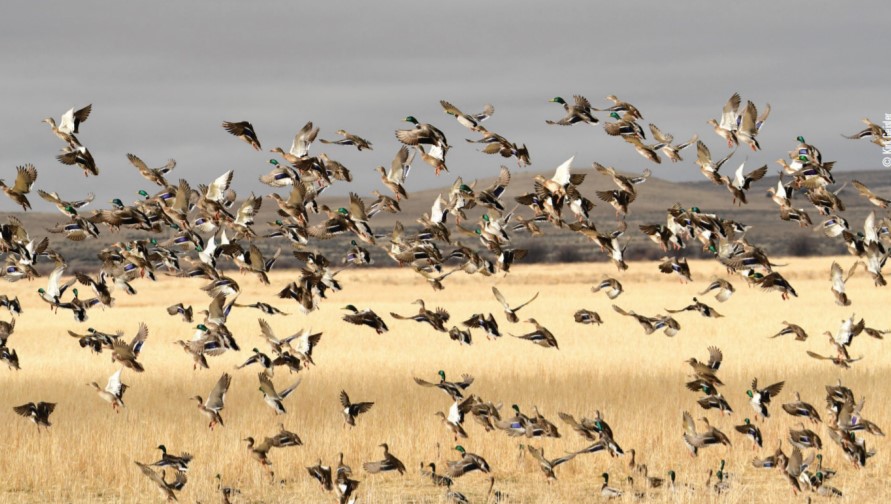
In my view, the last thing you want to look like is a “human.” Take the time to make a proper blind or pit. When doing field hunts on our farm we will usually dig pits about 3 to 4 feet deep. The 5 foot bucket on the tractor makes easy work of it and it’s the perfect size pit for 1 adult, or an adult and an accompanying youth. After digging the pits, we’ll take the time to either remove the freshly dug earth, or find a way to camouflage it. Ducks and geese can notice the disturbance.
Sometimes all it takes is the slight movement of your head as you glance up to keep track of whether or not this is the pass that you’ll “take ‘em” on, to send them flaring off in search of a more trustworthy destination. Human skin is like neon to a duck on a sunny day. Hunters must stay still, use camo face masks or face paint, or at the very least keep the brim of your cap low and make sure your ambush site is blended into the surroundings.
4. The Right Tool for the Job
Choosing the correct shotgun is essential. First, it must fit you. When you “cheek the gun,” are you looking at the correct line of sight? A shotgun must fit you properly or you’ll be flailing steel for not. For small ducks, I like a twelve gauge, but for anything from mallards to giant honkers you’ll find me with a Remington Special Purpose ten gauge. It delivers more pellets, fits me well and when I pull the trigger, “wings fold.” On these two hunts I used an improved cylinder with # 2 steelshot; however, learn what brands and loads perform best in your specific shotgun.
5. Talk the Talk
If you don’t know how to blow a call, learn, they work! With big flocks of geese I’m not sure they can hear you because they’re making so much noise themselves. However, on both ducks and geese, with the smaller flocks and the onesy-twosies, calling definitely helps. Calling adds authenticity to your set-up and directs focus your way. You don’t need to be a call-master, but if you haven’t got a clue, rent a tape and practice on the trip to the slough. Knowing what call to blow and when to blow it are important details for mallards and geese. Scouting, more than any one detail, is the most important measure towards success. Not only for waterfowl, but when hunting anything. You need to know the birds are there, and then the best spots to get close to them. Even if you have your own impoundment, learning the patterns and where the waterfowl favor being during different conditions is important. If you do your scouting, and then apply the advice regarding set-up and decoy placement, success will follow for you.

















